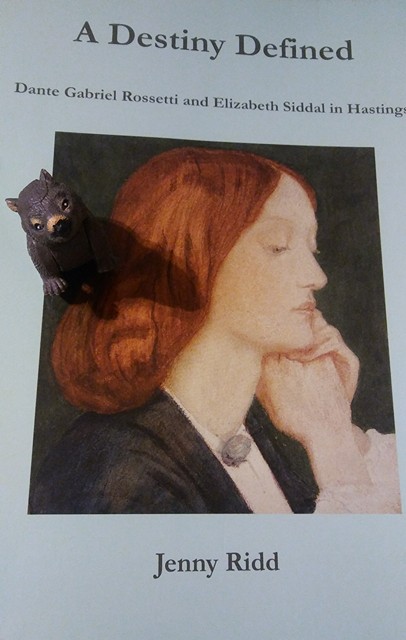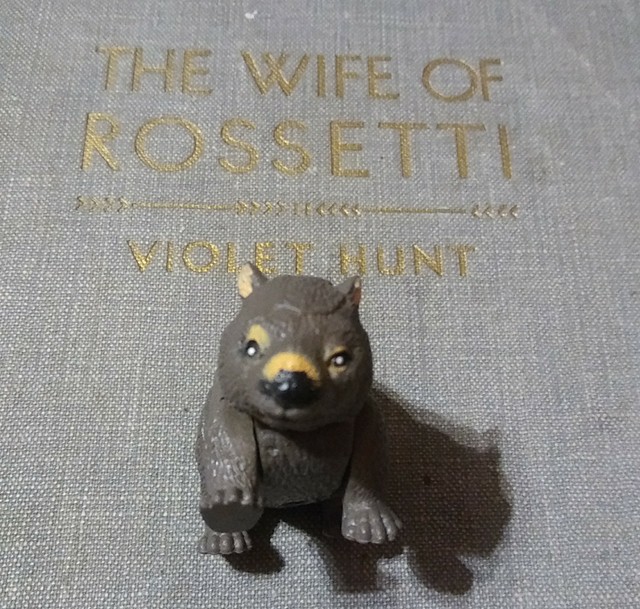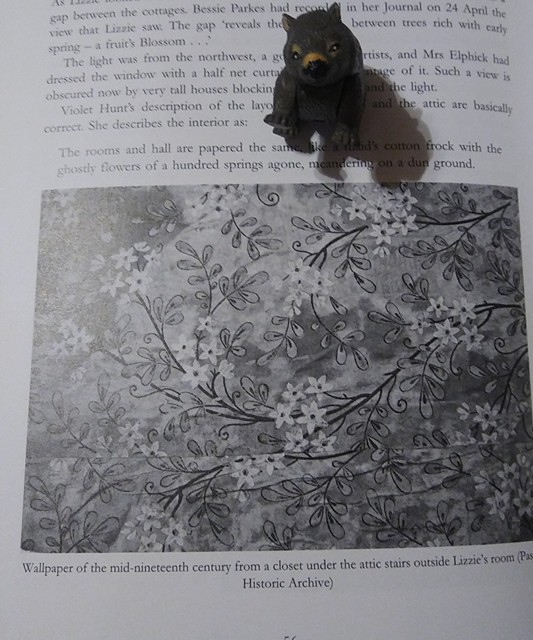Inspired by artist Dante Gabriel Rossetti’s passion for wombats, every Friday is Wombat Friday at Pre-Raphaelite Sisterhood. “The Wombat is a Joy, a Triumph, a Delight, a Madness!” – Dante Gabriel Rossetti
Thaddeus Fern Diogenes Wombat is a worthy assistant at Pre-Raphaelite Sisterhood. He eagerly absorbs everything he encounters about the Pre-Raphaelites and I enjoy sharing the art I am passionate about with such a wondrous wombat.
T-Dub, as he is known to close friends, is especially curious about the relationship between artist, model, and poet Elizabeth Siddal and her husband Dante Gabriel Rossetti, a founding member of the Pre-Raphaelite Brotherhood. Together, Ol’ T-Dub and I have been reading A Destiny Defined: Dante Gabriel Rossetti and Elizabeth Siddal in Hastings. I’ll write a proper review of it later. Today, I simply want to share a moment I had while reading the book that gave me serious pause.
I have always been dismissive towards Violet Hunt’s 1932 biography, The Wife of Rossetti. It is largely regarded by scholars as a gossipy work, filled with florid language and written with a distinct bias against Rossetti. In 2007, I described the book on my website LizzieSiddal.com:
Hunt has a tendency to go on wild tangents not even remotely related to Siddal, especially in the early chapters of the book. Violet Hunt’s account relies heavily on what she heard discussed when she was growing up and anecdotes are presented in the same manner one would expect an eavesdropper to share. I would never suggest this book to someone without also suggesting that they balance it by reading Jan Marsh’s books The Legend of Elizabeth Siddal and Pre-Raphaelite Sisterhood and Lucinda Hawksley’s Lizzie Siddal: Tragedy of a Pre-Raphaelite Supermodel.
A decade later and I find myself reading A Destiny Defined, Jenny Ridd’s absorbing account of her own home, 5 High Street, the very dwelling occupied by Siddal and Rossetti when they visited Hastings. Ridd’s research is impressive and fascinating to read.
I was stunned when reading Ridd’s description of Siddal’s bedroom. She shares Violet Hunt’s description of the wallpaper, “The rooms and hall are papered the same, like a maid’s cotton frock with the ghostly flowers of a hundred springs agone, meandering on a dun ground.” (Dun is defined as a dull, grayish brown color.) In an upstairs closet, Ridd found a layer of wallpaper matching Hunt’s description. It has been dated to the 1850s. It looks like despite the flaws I have always seen in her book, in this instance Hunt was correct.
To be honest, I’m excited to find that what seems to be a small detail is accurate. Does it make me change my thoughts about Hunt’s book completely? Of course not. But, like the act of peeling layers away to expose a century’s worth of paint and wallpaper, I find myself wanting to carefully revisit Hunt’s work. It has been over a decade since I read it and having learned and written so much about Siddal since then, I think it’s time to reread it and approach it with a more discerning eye.
This was a valuable lesson for T-Dub and I, and it’s a lesson that spills over into all areas of life. Don’t be so rigid in your thinking that you reject or accept things in such broad terms solely based on your perception. Be open minded and challenge yourself. Read, think, learn. My opinion on Hunt’s work created blinders and my rejection of her allowed me to be dismissive towards everything she said. The wallpaper shows me that I should dig beneath the surface and pay attention to the details of each layer I peel away.
While I still believe that her biography is a largely rooted in hearsay, Hunt obviously scattered a few seeds of truth there. It’s worth exploring that.
In your search for truth, beware of what you think you already know.



